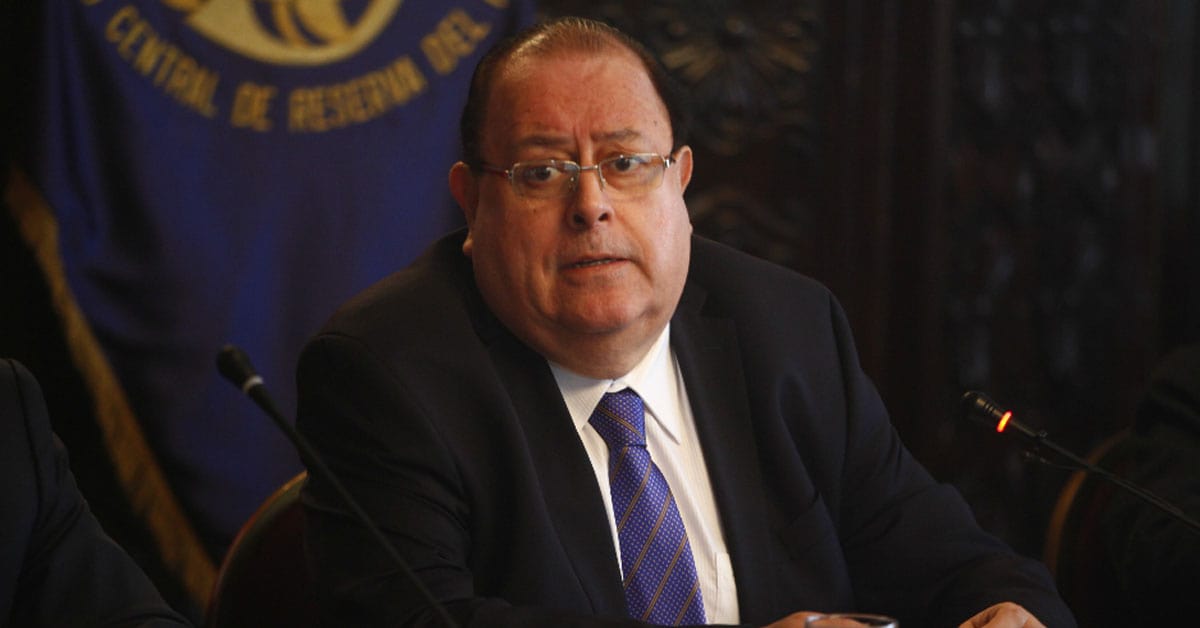Julio Velarde, governor of the Central Reserve Bank of Peru (BCRP), discusses economic growth and the impact of the Covid-19 pandemic with Global Finance.

Global Finance: What is your view of the Peruvian economy in the coming 12 months? What are the main risks?
Julio Velarde: Favorable domestic and global conditions are expected to underpin growth in the coming months. Additional support will come from the vaccine rollout and a gradual easing of restrictions on certain activities. The terms of trade have improved considerably and a global recovery is underway. At the same time, economic activity is expected to remain below potential at least until 2022.
Inflation is transitorily above the target band, but the surge in inflation is a global development and domestic trend inflation indicators remain within target. Once transitory pressures on the exchange rate and international fuel and grain prices recede, inflation over the next 12 months and beyond will likely return within the target band.
Additionally, the government has the capacity to implement countercyclical policies and the financial system remains sound.
GF: Peru has been one of Latin America’s most stable and fast-growing economies, yet recent political turmoil, though mild, is a rising concern for investors. What is your view? What can the central bank do?
Velarde: Political risks created considerable volatility in local financial markets, but spillovers on the real estate and macroeconomic fundamentals have been contained by significant fiscal and monetary initiatives. In this context, the BCRP contributes to long-term growth by preserving monetary and financial stability.
On one hand, the BCRP’s policy decisions and use of monetary instruments have been consistent with the mandate to preserve the purchasing power of the currency. As a result, core and trend inflation indicators remain within the target band.
On the other hand, the BCRP’s inflation-targeting arrangement with macro financial considerations seeks to attenuate local financial volatility, sustain payment systems and ensure unhindered credit flow. Although unable to alter long-term trends in financial markets, such policies smooth out financial market turmoil, thereby facilitating prudent behavior against domestic and foreign shocks.
GF: Do you think emerging markets face a tougher road to a post-pandemic recovery?
Velarde: In the short run, a limited vaccine supply and sharper frictions in the supply chain resulted in a lower speed of recovery in emerging economies vis-à-vis advanced countries. However, the scarring effects on the economy don’t seem to be extreme, and therefore emerging economies are expected to resume pre-crisis growth in the medium term.
GF: Did the health crisis change the economy in a permanent way?
Velarde: The pandemic affected potential output via disruptions in business operations, constraints on factor mobility, declining investment and productivity effects associated with reallocations among industries and adjustment to Covid-19 restrictions. Forecasts remain uncertain regarding the persistence and implications of such developments. However, the authorities have implemented aggressive monetary and fiscal policies to prevent undesirable long-run effects, such as hysteresis.
Additionally, sanitary risks linger. There is uncertainty regarding the spread of the Delta variant and the eventual worsening of the health crisis. In this context, the BCRP continues to work to preserve monetary stability, anchor inflation expectations and ensure adequate credit flows.
GF: What is the economic outlook for Latin America overall?
Velarde: The outlook for growth in Latin America is positive, considering expectations for a global demand recovery and high commodity prices. Growth will be further reinforced as regional uncertainty and volatility dissipate. In particular, the income effect associated with improved terms of trade and growth expectations is expected to propel investment and growth prospects in Latin America.



